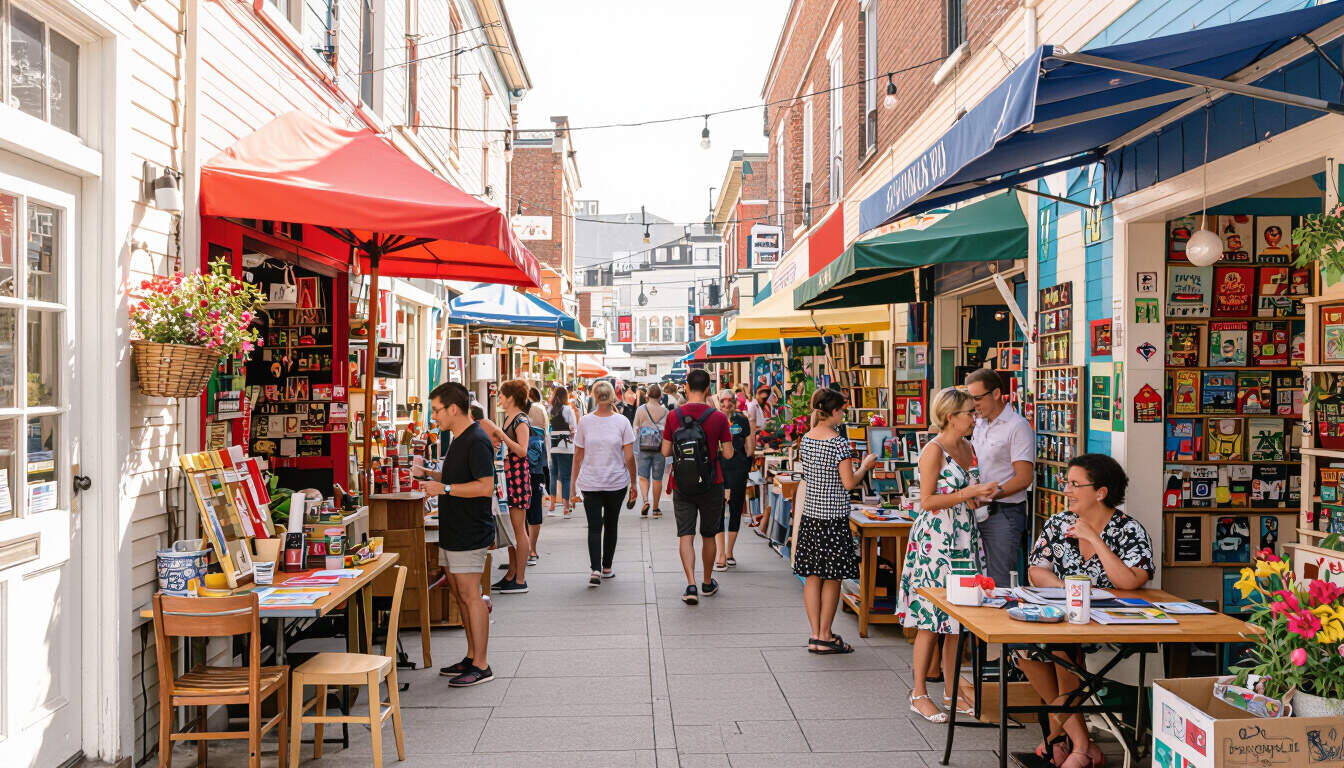Guerrilla PR with Small Business Alleyway Events
 by Max Miller
by Max Miller
Discover how small businesses can use alleyway events to create buzz and connect with audiences in unexpected ways. This approach offers fresh tactics for building brand visibility through creativity and community engagement, perfect for niche markets.

Small business alleyway events represent a creative way to generate publicity without large budgets. These gatherings turn overlooked spaces into vibrant hubs of activity. By hosting events in alleys, businesses can capture attention in surprising locations.
Guerrilla PR focuses on unconventional methods to promote brands. Alleyway events allow companies to interact directly with potential customers. This strategy builds loyalty through personal connections.
One key advantage is the low cost involved. Businesses can set up pop-up stalls or demonstrations with minimal resources. For instance, a local artisan might showcase handmade goods in a quiet alley, drawing in passersby. Such events foster word-of-mouth promotion.
To begin, select a suitable alley that fits your brand's vibe. Look for areas with foot traffic but not overwhelming crowds. This ensures your event stands out without competing for attention.
Next, plan the event details carefully. Decide on activities that engage participants, like live demos or interactive games. Make sure to align these with your business goals. For example, a coffee shop could offer free samples, encouraging tastings and feedback.
Timing plays a crucial role. Choose off-peak hours to avoid disruptions. This might mean scheduling for evenings or weekends when people are more relaxed.
Promotion is essential even for guerrilla tactics. Use social media to hint at the event without revealing too much. Create intrigue to build excitement. For instance, post teasers about a "secret gathering" in a specific neighborhood.
During the event, focus on creating memorable experiences. Encourage photo opportunities that participants can share online. This amplifies reach organically. Guerrilla PR thrives on these viral moments.
Consider partnering with other local businesses to expand impact. A group of shops could collaborate for a themed alleyway market. This not only shares costs but also strengthens community ties.
Measuring success involves tracking attendance and engagement. Note how many new followers or sales result from the event. Adjust future plans based on what works best.
For niche markets, alleyway events offer targeted outreach. A specialty bookstore could host author readings in a hidden spot, attracting book enthusiasts. This precise approach builds a dedicated audience.
Innovation is at the heart of these tactics. Experiment with unique themes, like eco-friendly pop-ups for sustainable brands. Keep events fresh to maintain interest.
Safety and legality are important factors. Ensure the alley is public and obtain any necessary permits. This protects both the business and attendees.
In practice, a fashion startup used an alleyway event to debut a new line. By inviting influencers casually, they generated online buzz quickly. The result was increased website traffic and sales.
Another example involves food vendors creating pop-up tastings. These events turned casual encounters into loyal customers, showcasing products in a relaxed setting.
To maximize effectiveness, incorporate feedback loops. Ask participants for input to refine future events. This iterative process leads to better outcomes.
Overall, small business alleyway events provide a dynamic tool for growth. They encourage creativity and direct interaction, helping brands stand out in competitive landscapes.
Why Choose Alleyway Events?
Alleyway events offer distinct benefits for small businesses. They provide intimate settings for storytelling, allowing brands to share their narratives personally. This builds deeper connections than traditional advertising.
Additionally, these events can be adapted to various niches. A tech gadget seller might demonstrate products in an urban alley, appealing to tech-savvy crowds. The key is relevance to the audience.
Steps for Organizing Your Event
- Identify your goals: Determine what you want to achieve, such as increasing brand awareness or driving sales.
- Scout locations: Find alleys that align with your brand and have potential foot traffic.
- Develop a theme: Create a cohesive concept that ties into your products or services.
- Promote strategically: Use digital channels to spread the word without overexposing details.
- Execute and follow up: Run the event smoothly and engage with attendees afterward to maintain momentum.
By following these steps, businesses can turn simple ideas into effective PR campaigns.
In closing, alleyway events embody the spirit of guerrilla PR for small businesses. They offer practical ways to innovate and connect, paving the path for sustainable growth.
